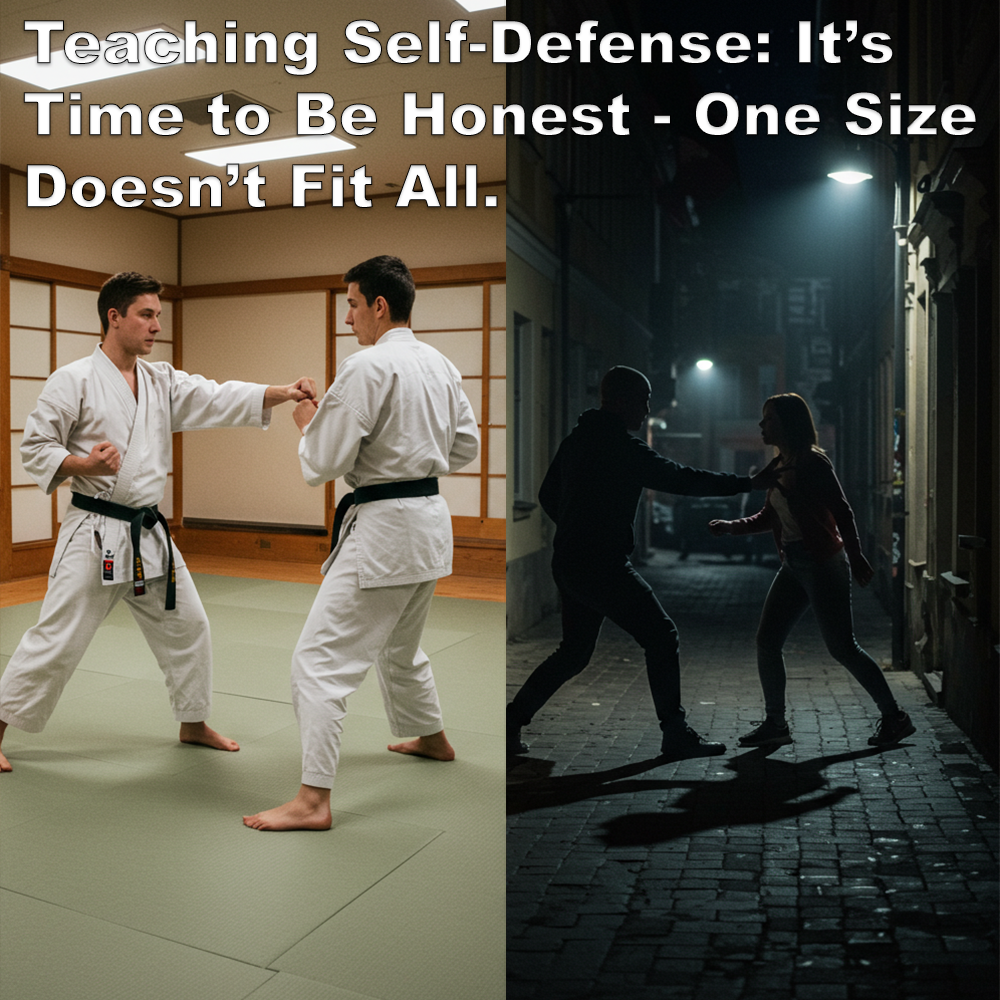
(Approx 2minute 15 second read)
First, I want to thank those of you who follow my page and read my articles. If you do. you should know I prefer the practical and effective over rigid, performance-focused modern karate.
.
I often write about the stark differences between real self-defense and the misleading claims made by many dojos and instructors.
.
Recently, someone asked me a crucial question: “Would you teach a woman differently than a man?”
.
As always, my answer begins with context – my favorite word.
.
Personal protection should absolutely be tailored. Teaching a 275lb man the same techniques as a 120lb woman is fundamentally flawed. Yet, most martial arts classes do exactly that, adhering to a one-size-fits-all syllabus.
.
Real-world attacks are unpredictable, demanding varied responses. Personal protection training must equip each student with tools suited to their environment, using principles and techniques that align with their physical and mental makeup.
.
The nature of criminal assault has evolved, and many traditional martial arts are ill-equipped to handle modern threats – or legal realities.
.
Avoiding a drunken brawl outside a pub requires different skills than defending against multiple attackers on a dark street. A carjacking, sexual violence, or domestic violence, each presents unique challenges. If violence has changed, so must the martial arts claiming to prepare us for it.
.
So, how can martial artists improve their self-defense instruction?
.
Criminals use a range of strategies, including communication, lies, distractions, and physical aggression. Effective self-defense involves recognizing and countering these tactics – understanding how criminals manipulate with words, deceive with lies, and create distractions.
.
In response, we must learn de-escalation, strategic deception to create openings, and, when necessary, techniques to disrupt an attacker’s physical and mental state to ensure a safe escape.
.
And if you have to fight, you must be able to justify your use of force and train with legal considerations in mind.
.
Your training should cover single and multiple attackers, focusing on effective escape strategies – not just the usual “run away.”
.
Developing the ability to defuse situations verbally and withstand verbal abuse is essential. So is understanding when and how to use a protective stance – not the high guard typically taught – and how to react when it’s breached.
.
Knowing what to say, how to carry yourself, how to retreat safely, and how to defend while injured are all critical skills.
.
Many focus on aerobic fitness, but anaerobic fitness – short, intense bursts of combat – is just as important. Preemptive skills should be a core part of training. Techniques for defending others need to be included too.
.
Physically, you must be proficient in grappling, both standing and on the ground, especially in getting back to your feet.
.
Weapons training – both blunt and edged – is a must. The role of the environment should be considered, and using everyday objects as improvised weapons should be explored.
.
Incorporating these elements into training creates a more practical, well-rounded self-defense curriculum.
.
Unfortunately, many instructors take a one-size-fits-all approach, often because they lack real-world experience themselves. They teach what they were taught, never questioning it. As a result, generations of students believe they are prepared for reality when they are not.
.
If people seek self-defense, we owe it to them to provide something that actually works. Modern, stylized karate is not it. Too many instructors know this but refuse to be honest about it.
.
.
Written by Adam Carter
